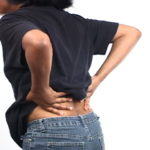Hypertension is known as the ‘silent killer’. In most cases, it does not present symptoms, but having high pressure progressively damages the cardiovascular system, in such a way that it can affect blood vessels and important organs such as the heart, kidneys and brain. It is not a marginal disease: it affects 35% of adults and 68% of those over 65, according to the Spanish Society of Internal Medicine, although 14% of those affected do not know they have it.
In addition, patients with high blood pressure have a twice as high risk of dying from covid-19, according to research published last June in the ‘European Heart Journal’. It’s no wonder when you consider that malfunctioning of the cardiovascular system can exacerbate the ‘cytokine storm’ with which immune cells flood the lungs and attack them when in fact they should be protecting them.
Patients with high blood pressure are at twice the risk of dying from covid-19
If the systolic pressure exceeds 140 mm Hg or the diastolic one is equal to or greater than 90, it is recommended to see a doctor. However, there is the possibility of changing certain habits on a daily basis to avoid reaching this extreme:
1. Learn to measure your blood pressure
Indeed, it is difficult to detect hypertension without regular monitoring. Health authorities recommend doing it at least once every four years for people between the ages of 14 and 45, and every two years thereafter. In case of having high blood pressure, it will be necessary to do it more frequently, always paying attention to the doctor’s recommendations. To correctly take the tension, the Public Health System of La Rioja offers the following recommendations:
Take it after five minutes of rest at least.
- The person should be relaxed and not in a hurry.
- You must also not have eaten, drunk exciting substances (coffee, tea) or smoked during the half hour prior to the measurement.
- The body position should be seated, not stretched, with the back resting firmly on the back of the chair. The legs should be touching the ground, not crossed, and the hand relaxed, not squeezed and in a resting position.
- Reference or dominant arm supported more or less at the level of the heart, relaxed hand. The reference or dominant arm is the one in which the BP is highest.
- The cuff must be in contact with the skin, so the patient must roll up the sleeves. If it is winter and you wear many layers of clothing, it would be better to remove them because if you roll up different garments at the same time, you can create a ring that constrains the area.
- Once positioned, the person will put on the cuff, which will adapt to the diameter of the arm (small, normal, large). The explanation of the placement is reflected in a graph that accompanies the device, so once the cuff is adjusted, the button must be pressed to connect the blood pressure monitor.
- It is important that while the cuff is inflated the patient does not speak, since that would affect the marked values.
- Do not round figures.
2. Greener and less red
Lowering blood pressure depends largely on diet. A diet based on whole grains, fruits, vegetables and non-fat dairy products contributes to lowering blood pressure up to 14 mm Hg, in addition to reducing blood cholesterol levels. Changing eating habits may seem difficult, but luckily Spaniards play at home. The Mediterranean diet is widely accepted as one of the healthiest in the world and incorporates the variety necessary to keep tension at bay, as long as you maintain a ratio of two to three servings of lean meat per week.
3. Reduce the salt in your dishes
Decreasing sodium intake in the diet, even in small amounts, can cause blood pressure to drop from 2 to 8 mm Hg. The advisable thing is not to consume more than 2,300 milligrams daily – the equivalent of a tablespoon – and to narrow the limit to 1,500 mg from the age of 51 or in case of hypertension, diabetes or similar diseases. On the contrary, the ideal to nullify the effects of sodium is to increase the consumption of potassium, present in fruits such as bananas, raisins or oranges.
4. Move regularly
Sports should not be confused with physical activity. Sport involves setting goals to improve performance, a certain demand, after all; but to control the tension it is enough to do physical activity on a regular basis. Going for a walk, jogging, or playing team games for 30 to 60 minutes a day can lower blood pressure by 4 to 9 mm Hg. This option is especially useful for those who are close to having hypertension (systolic pressure between 120 and 139, or diastolic pressure between 80 and 89), while those who already have hypertension will reduce the indicators to a safe level.
5. Watch your waist
The specific mechanism by which hypertension occurs in 95% of patients is unknown, but the correlation between blood pressure and increased body mass has been demonstrated in various studies, especially when fat is distributed around the waist. As a general rule, the more you lose weight the more your blood pressure drops, but this option also serves to enhance the action of antihypertensive medications. Thus, for example, losing 10 kilos can lower the pressure at two points, while most drugs are capable of reducing it at one point.
6. Restrict the amount of alcohol
In small amounts, alcohol consumption can lower blood pressure by between 2 and 44 mm Hg, but this ‘protective’ effect is lost with excess. Where is the limit? Professionals from the prestigious American Mayo Clinic mark it in two daily alcoholic beverages for women and men under 65 and one for the elderly. If alcohol is not normally consumed, it should not be started as a means of reducing blood pressure, as the possible harm from this substance outweighs the benefits.
7. Avoid tobacco at all costs
It is also necessary to avoid the consumption of tobacco and its derived products. Nicotine can increase blood pressure by 10 mm Hg, even up to an hour after smoking. Hence, if a person smokes all day, their blood pressure is constantly kept at high levels. Not only is the health of the smoker at risk: inhaling the smoke produced by others increases the risk of hypertension and heart disease.
8. Cut down on caffeine
Caffeine can cause a short but drastic increase in blood pressure. The causes of this voltage spike are not exactly known. Some researchers believe it could be because it blocks a hormone that keeps the arteries open, and others choose to have the adrenal glands release more adrenaline. Be that as it may, drinking a cup of coffee or tea can increase blood pressure by 5 to 10 points in just 30 minutes.
9. Run away from stressful situations
Too much workload, a family quarrel, the economic situation … There are many reasons that can cause stress and not all of them can be avoided, but it is important to try, not only for mental health, but for the good of the cardiovascular system, who suffers with each personal crisis. It goes without saying that the best person to manage this type of situation is a psychologist, but there are certain practices that are usually effective in promoting relaxation, such as taking rest periods to do deep breathing exercises, meditate or practice yoga.
10. Remember that you are not alone
Precisely, it is essential to lean on others. Changing routines is not so hard in the company of family and friends, who in addition to providing a moral boost can play a decisive role in releasing stress. Playing sports accompanied is easier, going to the doctor becomes easier with another person next to you and facing an unknown situation is less scary when you have good advice.














